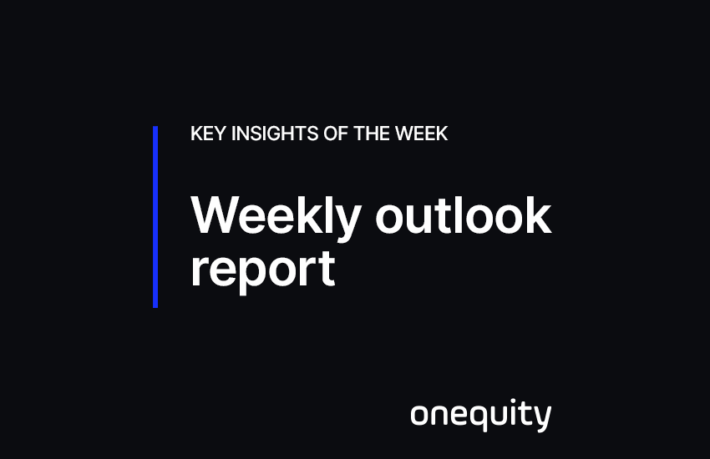Weekly Market Outlook | 11–15 Aug

The week of August 11–15 is expected to be quieter in terms of scheduled events but still carries the potential for meaningful market developments. In the United States, focus will be on July CPI, PPI, and retail sales, as investors assess inflation trends against signs of slowing growth and persistent trade tensions. In the UK, the Bank of England’s recent rate hike keeps the labor market, GDP, and industrial production data in the spotlight. Meanwhile, the Reserve Bank of Australia is widely anticipated to cut rates, with its policy guidance likely to drive market reaction. Key releases from Japan and China will also shape regional monetary policy expectations, keeping global markets attentive despite the lighter calendar.
Key Points to Watch
- U.S. CPI and PPI data ahead of a potential dovish shift from the Federal Reserve.
- RBA expected to cut rates amid moderating inflation in Australia.
- UK employment and GDP data could influence the pound following the BoE meeting.
- Japan’s GDP results may influence expectations for a Bank of Japan rate hike.
US Dollar Faces a Crucial Test Ahead of Inflation Data
The U.S. dollar extended its decline last week following weaker-than-expected Nonfarm Payrolls data, disappointing ISM non-manufacturing PMI figures, and the imposition of reciprocal tariffs on August 7. These developments have intensified recession concerns. While higher tariffs may add upward pressure on inflation, they have also heightened fears over the U.S. economy’s resilience. Markets are now fully pricing in a 25 bps rate cut in September and approximately 60 bps in cuts by year-end.
This week’s focus will be on July CPI (Tuesday), PPI (Thursday), and retail sales alongside the University of Michigan’s preliminary August consumer sentiment report (Friday), which will include one-year and five-year inflation expectations. While ISM manufacturing data pointed to slowing price growth, non-manufacturing prices accelerated sharply. Given manufacturing’s smaller share of GDP, this underscores potential upside risks for inflation.
Stronger-than-expected inflation, even before factoring in new tariffs, could moderate expectations for aggressive Fed easing. Conversely, weaker retail sales would support the current market view for continued rate cuts, limiting any CPI-driven rebound in the dollar. Additional tariff measures against China could also weigh on the greenback in the near term.
Reserve Bank of Australia: Rate Cut Expected, Guidance in Focus
The RBA meets on Tuesday, August 12, and is widely expected to lower interest rates by 25 bps, with markets pricing in an additional 60 bps of easing by mid-2026. The July decision to hold rates—despite a split within the Board—signaled a cautious approach.
Q2 CPI showed headline inflation easing to 2.1% year-on-year, near the lower end of the RBA’s target, while the trimmed mean slowed to 2.7%. This softening gives policymakers greater confidence to ease policy further. Since a cut is already priced in, the statement’s tone and updated macroeconomic forecasts will be the primary market drivers, with attention on whether September or November is the next likely move.
Wage growth (Wednesday) and July employment data (Thursday) will also be critical in shaping forward guidance. Additionally, Chinese data on Friday—including retail sales, industrial production, unemployment, and fixed asset investment—will be closely watched given Australia’s strong trade links to China.
Pound: Data in Focus After BoE Rate Hike
Following last Thursday’s 25 bps rate hike by the BoE—approved by a narrow 5–4–0 vote—UK markets will focus on Q2 labor market and GDP figures, as well as June industrial production and trade data. The BoE raised its inflation outlook and Governor Andrew Bailey emphasized caution in cutting rates too quickly, with markets now expecting the first rate cut only in February 2026. Stronger-than-expected data this week would reinforce this stance and lend support to the pound.
Japan and Regional Outlook
Japan’s Q2 GDP, due this week, will be pivotal in shaping expectations for BoJ policy. The probability of a 2025 rate hike has fallen to just above 50% amid U.S. tariff threats on Japanese imports, despite a recent bilateral agreement. A weak GDP print could shift expectations for the next rate increase into 2026, adding downward pressure to the yen.
Further Resources
Visit the OnEquity Official Website for real-time market intelligence, daily technical insights, advanced trading infrastructure, and institutional-grade solutions to support your strategic financial objectives.

